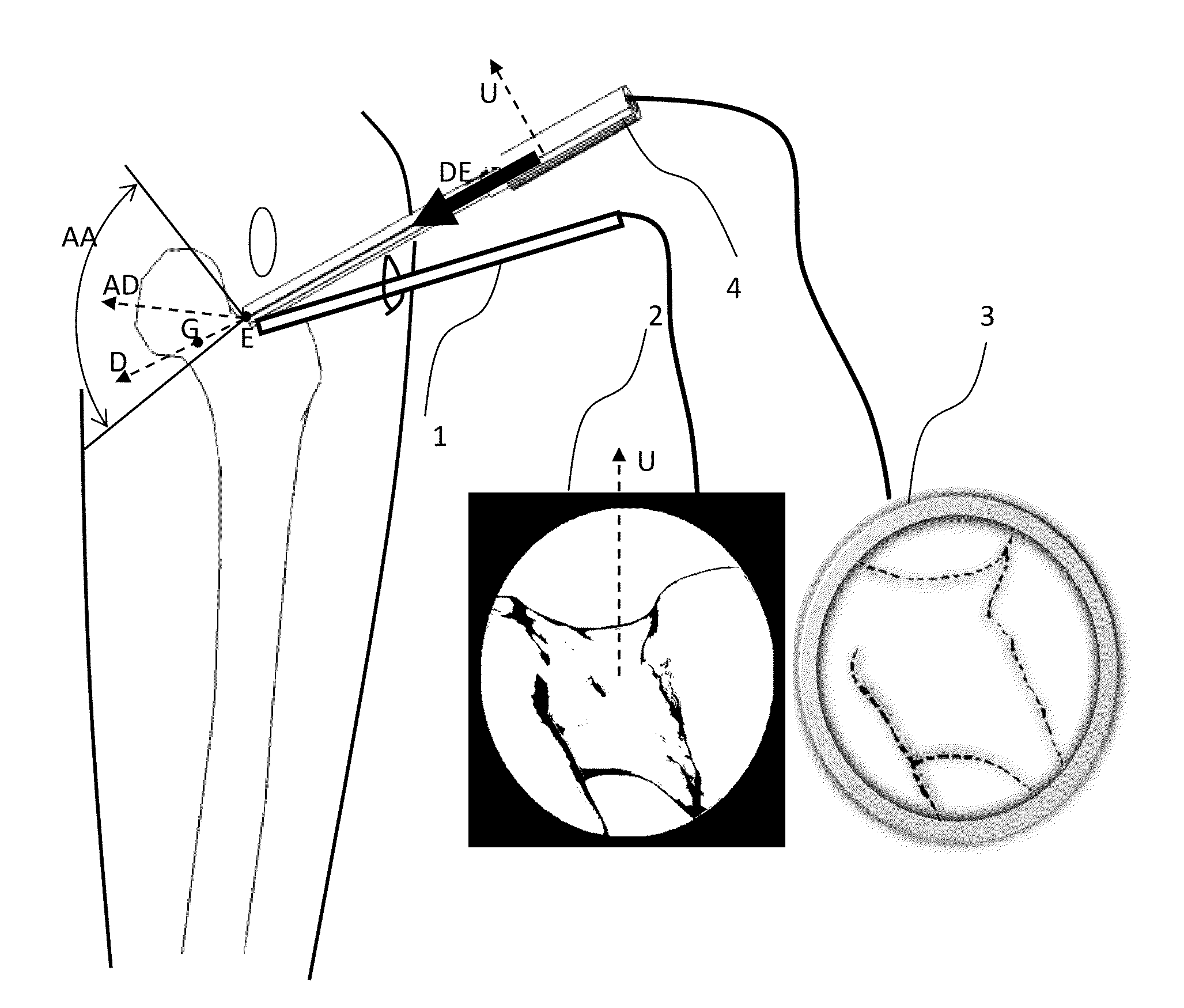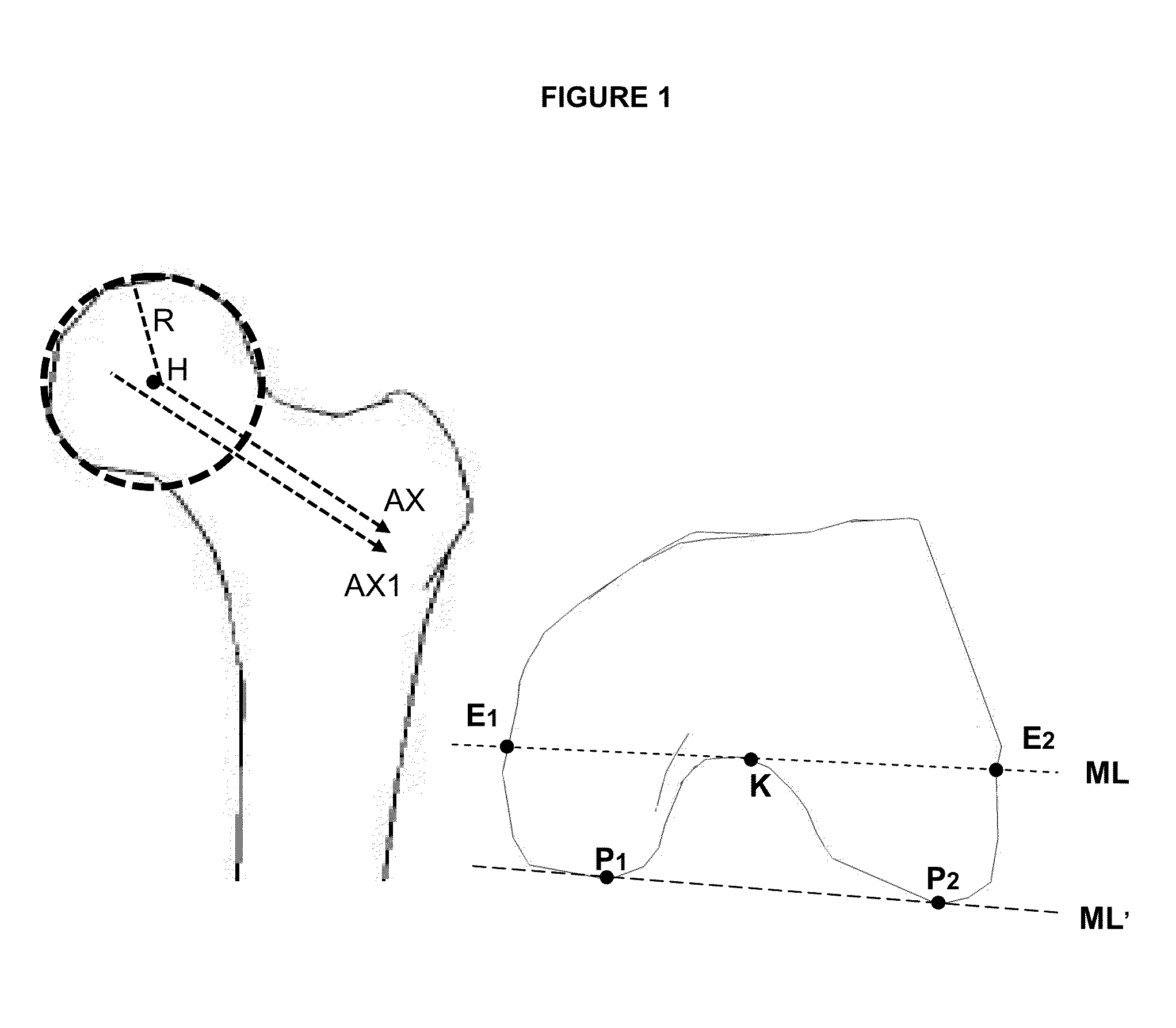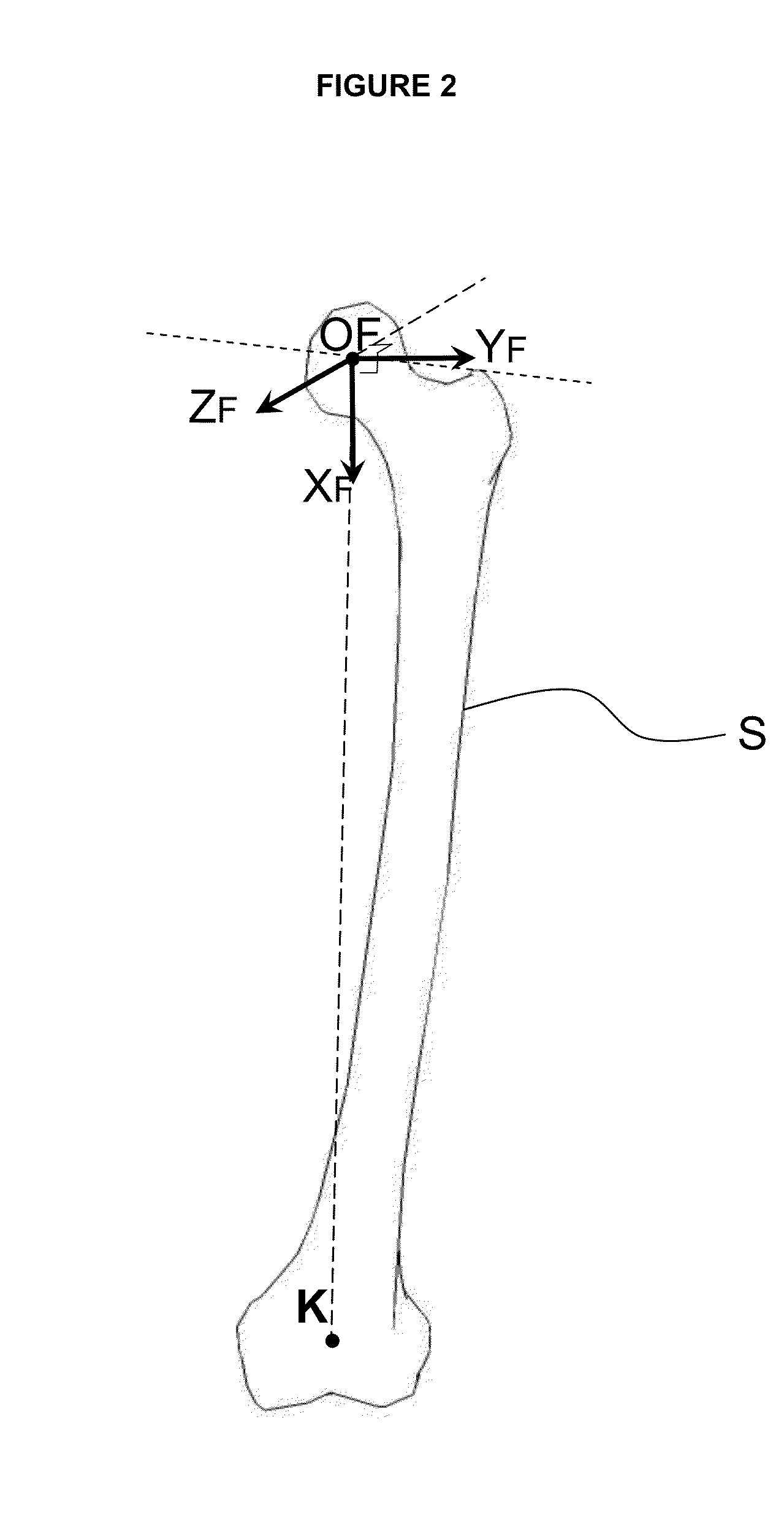Method of determination of access areas from 3D patient images
a 3d patient and access area technology, applied in image analysis, medical science, surgery, etc., can solve the problems of difficult to determine the correct and full diagnosis of this pathology, the repetitive impact of the proximal femoral neck, and the complex structure of the human body
- Summary
- Abstract
- Description
- Claims
- Application Information
AI Technical Summary
Benefits of technology
Problems solved by technology
Method used
Image
Examples
Embodiment Construction
:
[0048]The following description is directed to the use of CT images but it can be easily extended to other 3D images such as MR images.
[0049]The purpose of the invention is to provide a method and a device for helping the user to accurately and automatically determine portals and safe access areas for arthroscopic procedures using pre-operative 3D image and also for planning relevant arthroscopic images that can be used during the surgery in addition to target data. It is intended to provide a very simple and fast rehearsal tool or simulation of surgery. Moreover, the invention provides help for the surgeon to locate and use the predefined portals and safe access areas during surgery.
[0050]For clarity, an example of the method of the invention is described for the femur and pelvis bones during a hip arthroscopy procedure in the case of a FAI indication, but it can be applied to any other human or animal bone for which itself or the adjacent ligaments, tendons and muscles present an...
PUM
 Login to View More
Login to View More Abstract
Description
Claims
Application Information
 Login to View More
Login to View More - R&D
- Intellectual Property
- Life Sciences
- Materials
- Tech Scout
- Unparalleled Data Quality
- Higher Quality Content
- 60% Fewer Hallucinations
Browse by: Latest US Patents, China's latest patents, Technical Efficacy Thesaurus, Application Domain, Technology Topic, Popular Technical Reports.
© 2025 PatSnap. All rights reserved.Legal|Privacy policy|Modern Slavery Act Transparency Statement|Sitemap|About US| Contact US: help@patsnap.com



